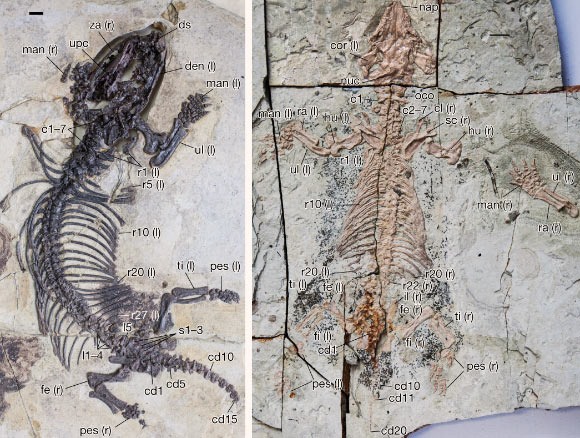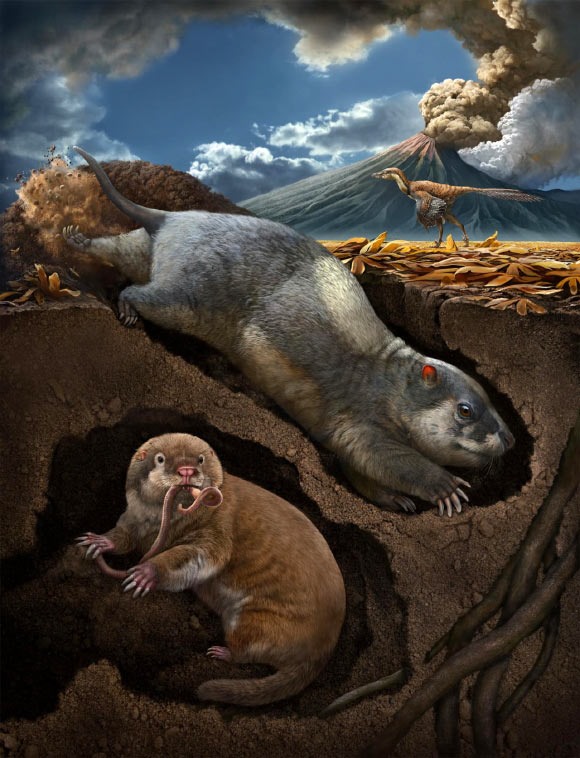Scientists have discovered fossils of two new burrowing mammal species that lived in northeastern China approximately 120 million years ago.
According to Science News, the fossils are named Fossiomanus sinensis and Jueconodon cheni, representing two mammal species that lived around 120 million years ago (early Cretaceous).

Fossiomanus sinensis (upper right) and Jueconodon cheni in their burrows. Photo: Chuang Zhao. Fossiomanus sinensis (upper right) and Jueconodon cheni in their burrows. Photo: American Museum of Natural History Jueconodon cheni belongs to the eutriconodontan species, a distant relative of modern marsupials and placental mammals, measuring about 17.8 cm long.
Fossiomanus sinensis belongs to the Tritylodontid herbivorous mammal species, reaching lengths of up to 31.6 cm. Fossiomanus sinensis is also the first herbivorous mammal discovered in the Jehol biota.
Fossiomanus sinensis (left) and Jueconodon cheni (right). Photo: Jin Meng (research team) Fossiomanus sinensis (left) and Jueconodon cheni (right). Photo: American Museum of Natural History Dr. Jin Meng of the American Museum of Natural History and colleagues state, “The Jehol biota in the early Cretaceous has yielded many well-preserved fossils, providing valuable information on the morphology and evolution of early mammal species.”
“These two new species expand the diversity of the mammalian fauna. Additionally, their fossils provide opportunities for researchers to further understand the biological characteristics (such as the development of the axial skeleton) of these extinct forms,” Dr. Jin Meng emphasized.
Burrowing mammals exhibit specialized features for this behavior. Dr. Meng and co-authors found notable features—such as short limbs and tails, and robust forelimbs—in both Fossiomanus sinensis and Jueconodon cheni.
Notably, these features indicate a digging behavior primarily performed with the clawed forelimbs.
Dr. Meng shares, “There are many hypotheses about why animals burrow into the ground and live underground. These include self-protection from predators, maintaining relatively stable temperatures, or finding food sources such as insects and plant roots.”
Fossiomanus sinensis and Jueconodon cheni also share another unusual feature: elongated vertebral columns. Typically, mammals have 26 vertebrae from the neck to the pelvis. However, Fossiomanus sinensis has 38 vertebrae, while Jueconodon cheni has 28.

To determine what caused these animals to have longer vertebrae than other species, paleontologists studied their biological development. They discovered that this variation could be due to genetic mutations determining the number and shape of vertebrae during the early embryonic development of the animals.
“These fossils shed light on the evolution of the vertebral column in mammals, which is the focus of many studies on the evolutionary process and biological development of vertebrate animals,” he said. Discoveries about Fossiomanus sinensis and Jueconodon cheni were published in the journal Nature.